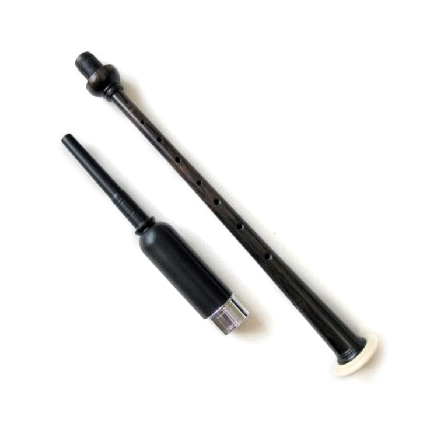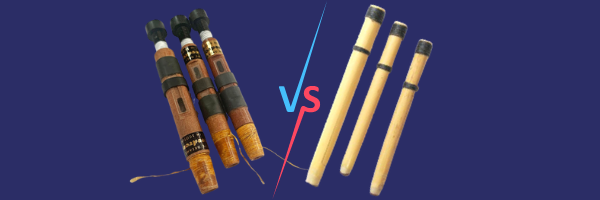A Practice Chanter Primer

Think about learning to ride a bike for a moment. For me, it was an intimidating experience! When riding a bike, you have to coordinate three simultaneous skills (give or take). Namely, you've got to pedal, somehow you've got to balance, and you also need to watch where you're going and control your direction.
Well, playing the bagpipes is like riding a bike except there are TEN simultaneous skills we will need to employ in order to be successful!
To learn the bagpipes, bagpipers manage this challenge by cutting out a lot of variables in the beginning stages. When you begin to play the pipes, you use what's called a practice chanter to learn the basics of how the fingers need to move in order to play bagpipe tunes.
The chanter is what we call the bagpipe "finger board." It's where we place our hands to make our bagpipes play tunes.
Typically, once a beginner can play a few tunes fundamentally correctly on the practice chanter, then they begin to "transition to the bagpipes," where we begin to introduce quite a few other variables into the mix.
The practice chanter has the added bonus of not being nearly as loud as the bagpipes. Usually, beginning pipers (or advanced players who want to practice their fingerwork) can play their practice chanter anywhere they need to without bother neighbors (or worse yet - spouses!).
Acquire a Practice Chanter
Practice chanters are easy to acquire, regardless of where you are in the world.
If you're a beginner, all you need is a "poly" (non-wood) practice chanter. It can be a short or a long model, depending on what you think you'll prefer.
Of course, blackwood chanters are very nice and have a great mellow sound. But they're considerably more expensive and in no way change the process of learning bagpipe fingerwork.
Here are some of our favorite dealers that you can use.
- United States: Henderson Imports is the place to go!
- Canada: We love Tartantown (Vancouver) and McGillivray Piping (Ontario)
- UK: Our friends at G1 Reeds make a great practice chanter for beginners.
- Elsewhere - you can google where to find practice chanters in your country!
Getting to Know the Practice Chanter
Our Piper's Dojo Beginner's Tutor can take you through all of the essential fingerwork you'll need to know to be a great bagpiper. Here is an excerpt discussing practice chanter basics.
Basic Care and Maintenance of a Practice Chanter
1-1.2: Properly Holding the Chanter, Sounding Low G
Holding the chanter is different from other instruments, so it's important that we get this right from the get-go. Once we know how to hold it, we'll sound a "Low G," which is the note you get with all holes covered.
1-1.3: Getting a Good Sound out of your Practice Chanter
In can be challenging to get your reed to sound good at first. We'll talk about finding the "sweet spot" that produces the best sound.






Responses